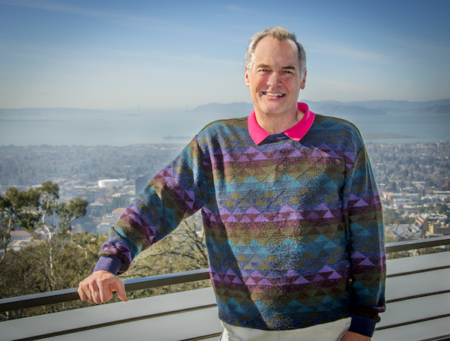 I want to thank LBNL management for their vote of confidence in asking me to lead the ALS through a time of transition and renewal, and also many in the ALS community who sent their congratulations and support. I very much look forward to working with the entire community and our DOE program managers to continue the ALS tradition of excellence.
I want to thank LBNL management for their vote of confidence in asking me to lead the ALS through a time of transition and renewal, and also many in the ALS community who sent their congratulations and support. I very much look forward to working with the entire community and our DOE program managers to continue the ALS tradition of excellence.
My appointment as director is a first step toward a revamped ALS management team, but key positions remain occupied by interim appointments. We will be filling the science and operations division deputy positions over the next several months. Moreover, you may know that Zahid Hussain, the Science Support Group lead, will be retiring at the end of June. A quick walk around the ALS floor indicates the huge impact Zahid has had on the facility, and we will sincerely miss his leadership and self-effacing style. I encourage you to communicate your thanks to Zahid for all he’s done for the ALS and its user community.
Zahid’s retirement provides a natural opportunity to reorganize the two-group structure within which our scientific staff has been managed for 20 years. That process is complete, and a new Photon Science Group was recently established. The group will be co-led by Howard Padmore, overseeing Photon Science Development, and a soon-to-be-named lead for Photon Science Operations. These group leads will oversee several subgroups focused on our core competencies in techniques and technologies. A parallel set of Science Groups has also been established and will take a complementary cut across the same ALS staff. The Science Council, comprised of leadership of the Science Groups, will directly advise ALS management. I will write more about this new organizational structure in upcoming columns as the roles and responsibilities of the groups become fully developed.
Since my time on and leadership of the ALS Scientific Advisory Council, which started 20 years ago, I have been keenly interested in the career development of ALS staff. Some of our strongest programs at the ALS involve collaborations that meld the expertise of users and ALS staff. These collaborations play a large role in the development of our staff, they can help improve staff work-life balance through strong engagement in student and postdoc training, and they benefit the overall ALS climate through productive collaborations. The Science Groups discussed above, for example, provide an opportunity to deepen our interactions with users through collaborative research and fundraising. I want to thank those of you who are engaged in such collaborations, and I assure you that I intend to continue to find ways to support them.
Another topic that is extremely important to our long-term future is the ALS Upgrade to an accelerator lattice optimized for high-brightness soft x-rays. Project personnel have been extremely busy and productive preparing for two reviews this summer associated with achieving CD-1 and running a beamline selection process. They recently underwent a “Director’s Review,” which is a dry run for the CD-1 review, and that went very well. I am very proud of what the team has accomplished in a very short time and look forward to working with them to ensure success.
Before closing, I want to confess that I am a list-maker. Recently I made a list of systems at ALS either in transition or needing some serious attention—the staff issues discussed above, some aging safety systems, a plan for data management and computing, initial discussion of Old Town renewal, our interface with ALS-U, beamline upgrades, new instruments, staff diversity, equity, and inclusion, and about a dozen others. I will be discussing some of these in future columns, and I invite you to think about adding to my list. Please stop by the next time you’re in town or catch me on one of my trips around the ALS floor. I am always happy to discuss our current operation and our bright future.